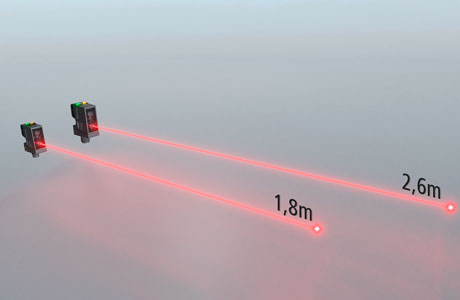Key Takeaway
Photoelectric sensors detect the presence or absence of objects and measure distances by emitting light, which is detected by a receiver. These sensors are widely used in industrial settings like manufacturing to ensure proper positioning and counting of products on assembly lines.
In packaging systems, they verify that items are sealed and labeled correctly. Additionally, photoelectric sensors are crucial in safety systems, preventing machinery from operating when objects or people are detected in danger zones. Their versatility makes them essential in automation and quality control.
Common Functions of Photoelectric Sensors in Industrial Environments
In industrial environments, photoelectric sensors serve as the eyes of automation systems. They are widely used for detecting objects, monitoring processes, and ensuring the smooth operation of production lines. From detecting items passing along a conveyor belt to determining if a machine is correctly aligned, these sensors provide real-time data to ensure everything runs efficiently.
Their ability to work in harsh conditions like dust, moisture, and temperature variations makes them ideal for industrial use. One of the major advantages is their non-contact nature, allowing them to perform tasks without wear and tear. This characteristic prolongs their life span and reduces the need for frequent maintenance.

Object Detection and Presence Sensing in Production Lines
One of the first things you’ll notice on any modern production line is the use of photoelectric sensors for object detection and presence sensing. These sensors ensure that each product is correctly positioned as it moves through the different stages of manufacturing. Whether it’s a simple task like confirming an item is placed for sealing or a more complex one like detecting missing parts, these sensors play a vital role. For example, in packaging industries, they guarantee that every product is aligned properly before it’s labeled or sealed.
Photoelectric sensors offer a significant advantage when it comes to handling products of various shapes and sizes, even transparent items. This is where traditional sensors might struggle, but photoelectric ones handle these challenges with ease. Their speed and accuracy make them indispensable in fast-moving production environments where efficiency is crucial. If an item is out of place or missing, the system detects it immediately, preventing larger problems down the line.
How Photoelectric Sensors Are Used for Counting and Sorting
In fast-paced industries like pharmaceuticals or food processing, counting and sorting are crucial. This is where photoelectric sensors come into play, making the process highly efficient. They accurately count each item as it moves along a conveyor belt, ensuring nothing is missed. For industries where precision is non-negotiable, like the pharmaceutical industry, this feature is invaluable. Accurate counts not only keep the production line moving smoothly but also ensure compliance with stringent industry standards.
But photoelectric sensors don’t just stop at counting—they’re essential for sorting as well. These sensors can differentiate between various product sizes or colors, directing them to the appropriate location. Whether you’re sorting bottles by size or products by color, photoelectric sensors automate the entire process, reducing the need for manual labor. The result is a more efficient, faster, and less error-prone system, which leads to overall higher productivity.
Integrating Photoelectric Sensors in Automation Systems
When you step into any modern manufacturing facility, you’ll see photoelectric sensors seamlessly integrated into broader automation systems. They work hand-in-hand with programmable logic controllers (PLCs) or industrial PCs, triggering specific actions like stopping or starting machines based on real-time conditions. This means that processes can be automated with precision, making manufacturing more streamlined and efficient.
What’s more, these sensors can be combined with other types, such as proximity sensors or even vision systems, to create a more robust and versatile automation network. This multi-sensor approach allows manufacturers to monitor and control every aspect of their operation with high precision. Their flexibility means they can be applied across various industries, whether it’s automotive, electronics, or food processing. This adaptability makes them an essential tool for anyone looking to optimize production.
Benefits of Using Photoelectric Sensors for Process Optimization
If you’re looking to optimize your production line, photoelectric sensors should be your go-to solution. By delivering real-time data on the status of products and machinery, they allow for quick adjustments to be made, enhancing the overall efficiency of the production process. This real-time monitoring ensures that any issues, such as misaligned products or machine malfunctions, are identified early, preventing potential downtime.
A major benefit of these sensors is their role in predictive maintenance. They continuously monitor machine performance and detect wear and tear before it leads to failure. This means engineers can perform necessary maintenance before a breakdown occurs, saving both time and money. Additionally, their ability to conserve energy by activating machines only when needed reduces operational costs, making your production line more cost-effective in the long run.
Conclusion
Photoelectric sensors play a crucial role in modern automation systems by improving accuracy, reducing waste, and boosting productivity. Tailoring their use to the specific needs of your production line through proper calibration, regular maintenance, and ongoing optimization ensures optimal performance. Collaborating with automation engineers allows fine-tuning of these sensors for precise detection and operation, whether it’s identifying small parts on a fast-moving assembly line or ensuring products meet strict quality standards. As industries continue to embrace automation, the versatility and reliability of photoelectric sensors will remain indispensable.
